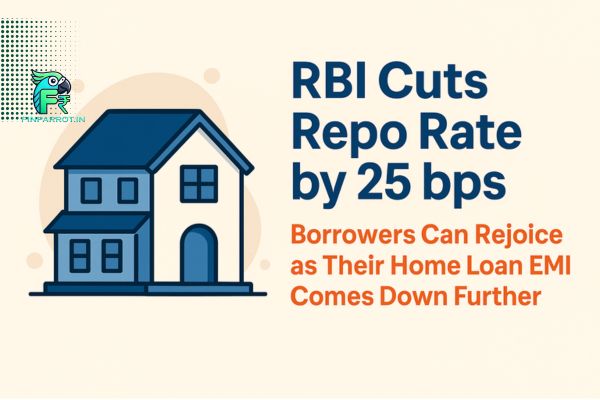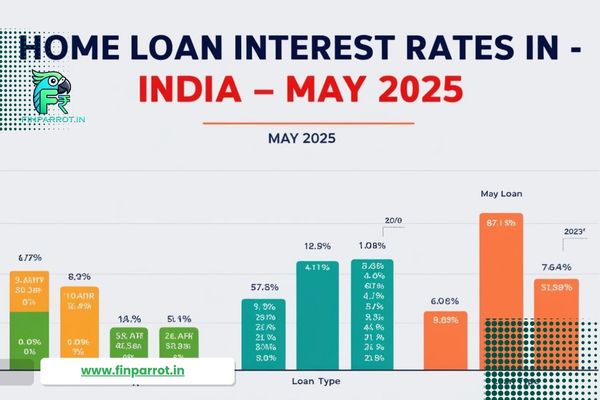Introduction
Owning a home is a major milestone—and so is managing the loan that comes with it. But what happens if, midway through your home loan journey, you need more funds for personal reasons like home renovation, medical emergencies, business expansion, or your child’s education? That’s where top-up loans on home loans come in. These additional loans are offered by banks and NBFCs over and above your existing home loan. They come with attractive interest rates and less stringent documentation since your lender already knows your creditworthiness. In this post, let’s explore how top-up loans work, when they make sense, and how to apply.
Top-Up Loans on Home Loans: How They Work & When to Apply
💡 “Not sure which loan to choose? Use our Loan EMI Comparison Calculator to instantly see how interest rates impact your EMI!”
1. What is a Top-Up Loan?
A top-up loan is an additional loan amount that a borrower can avail over and above their existing home loan. This facility is usually offered by the same lender, provided your repayment track record is clean and your outstanding principal allows room for more borrowing.
Unlike personal loans, which may carry interest rates above 12% to 18%, top-up loans usually come at a slightly higher rate than your home loan (around 0.5% to 1% extra)—still making it a much cheaper and smarter borrowing option.
2. Features & Benefits of Top-Up Loans
- ✅ Lower Interest Rates: Compared to unsecured loans like personal loans or credit cards.
- ✅ No Additional Security Needed: The same home continues to be collateral.
- ✅ Flexible End Use: Can be used for renovation, business, education, wedding, etc.
- ✅ Tax Benefits: If used for home renovation or construction, tax deductions apply under Section 24(b).
- ✅ Quick Processing: Since your loan history is already with the bank, approvals are faster.
- ✅ Longer Tenure: Same as remaining tenure of the home loan, making EMIs manageable.
3. Who is Eligible for a Home Loan Top-Up?
Eligibility is mostly determined by your repayment history, loan tenure, and the current outstanding amount on your home loan. Common conditions include:
- Must have completed 6–12 months of repayment on the original home loan.
- A good CIBIL score (typically above 700).
- A stable income with documented proof.
- The property should have sufficient market value to support additional borrowing.
- The loan-to-value ratio (LTV) must still fall within the permissible limit after the top-up.
📉 “Thinking of closing your loan early? Don’t miss the Home Loan Foreclosure & Prepayment Rules before making a move!”
4. Common Uses of a Top-Up Loan
- 🏡 Home Renovation or Interiors
- 🎓 Education Expenses for Children
- 💼 Business Expansion or Capital Investment
- 💍 Wedding Expenses
- 🏥 Medical Emergencies
- 💳 Debt Consolidation (Repay other high-interest loans)
Top-up loans are not restricted to home-related expenses—that’s what makes them versatile.
5. How Much Top-Up Can You Get?
Banks typically offer up to ₹50 lakhs or even more, depending on your eligibility and outstanding principal. The combined amount of your existing loan + top-up should not exceed 75% to 90% of the property’s current market value, based on the lender’s LTV policy.
6. Top-Up Loan Interest Rates in 2025 (Indicative)
| Bank/NBFC | Interest Rate (p.a.) |
| HDFC Bank | 9.25% – 10.50% |
| SBI | 8.85% – 9.65% |
| ICICI Bank | 9.50% – 10.75% |
| Axis Bank | 9.30% – 10.20% |
| LIC HFL | 9.00% – 10.95% |
💡 Note: These are indicative and depend on your credit profile, outstanding loan, and relationship with the bank.
7. Documents Required for Top-Up Loans
The documentation is minimal if you’re applying from the same lender. Common documents include:
- Loan application form
- Salary slips (last 3 months) or ITR for self-employed
- Bank statements (last 6 months)
- Identity and address proof (Aadhaar, PAN, etc.)
- Property papers (already with the bank)
- Income proof/co-applicant details (if applicable)
8. Top-Up Loan vs. Personal Loan – Which is Better?
| Criteria | Top-Up Loan | Personal Loan |
| Interest Rate | 9% – 11% | 12% – 18% |
| Tenure | Up to 15–20 years | 1–5 years |
| Processing Time | 2–5 days (faster) | 3–7 days |
| Security | Secured (Home as collateral) | Unsecured |
| Tax Benefits | Yes (on renovation/education) | No |
✅ Verdict: If you already have a home loan and need additional funds, a top-up loan is cheaper and more efficient.
9. When Should You Opt for a Top-Up Loan?
- When your home loan has good repayment history and at least 1 year of EMI track record.
- When your existing property value has appreciated and supports a higher loan-to-value.
- When you’re planning large expenses and want a low-interest loan with longer tenure.
- When you want to avoid taking multiple high-interest loans (debt consolidation).
- When you want fewer documents and quicker disbursal without fresh loan hassles.
10. Things to Watch Out Before Taking a Top-Up Loan
- It increases your overall loan burden and total interest payout.
- Check processing fees and insurance add-ons.
- Make sure the tenure is comfortable and doesn’t extend too long.
- Use the funds wisely—avoid using it for high-risk investments or non-essential spends.
- Always compare rates and check if balance transfer + top-up is cheaper with another bank.
Conclusion
Top-up loans on home loans are a practical and affordable way to get extra funds when you need them the most—especially if you already have a home loan with a good repayment history. With lower interest rates, longer tenures, and easier eligibility than personal loans, top-up loans are the smart borrower’s choice in 2025. Just make sure you evaluate your repayment capacity, use the loan wisely, and compare options across banks. Whether it’s for your home, your child’s future, or an emergency—a top-up loan can be your financial cushion without breaking the bank.
🏠 “Planning a big loan? See why a Chennai couple dropped their ₹1 Cr home loan plan after a deeper cost analysis.”









